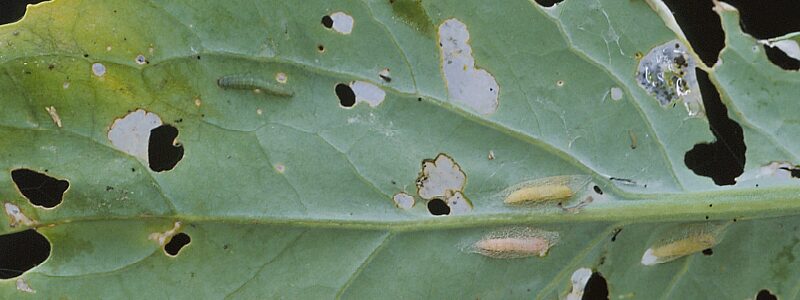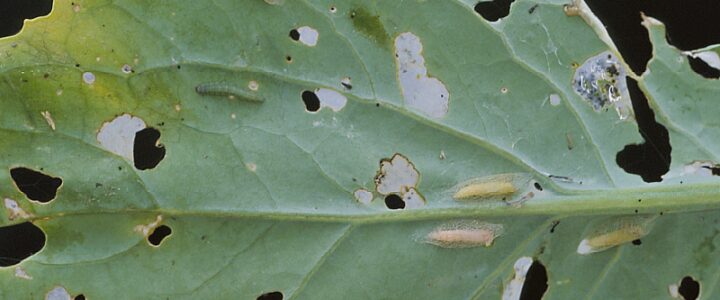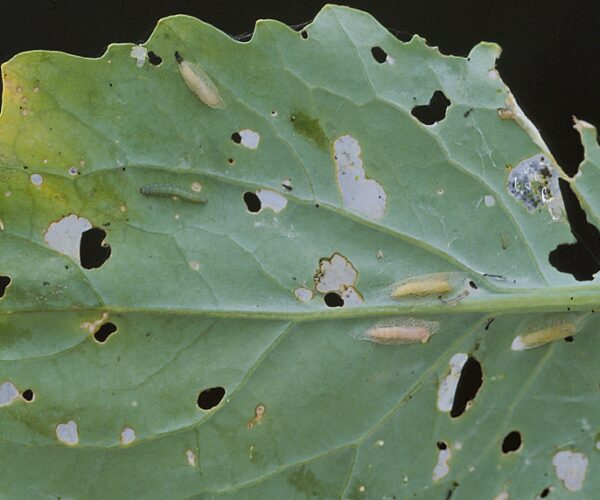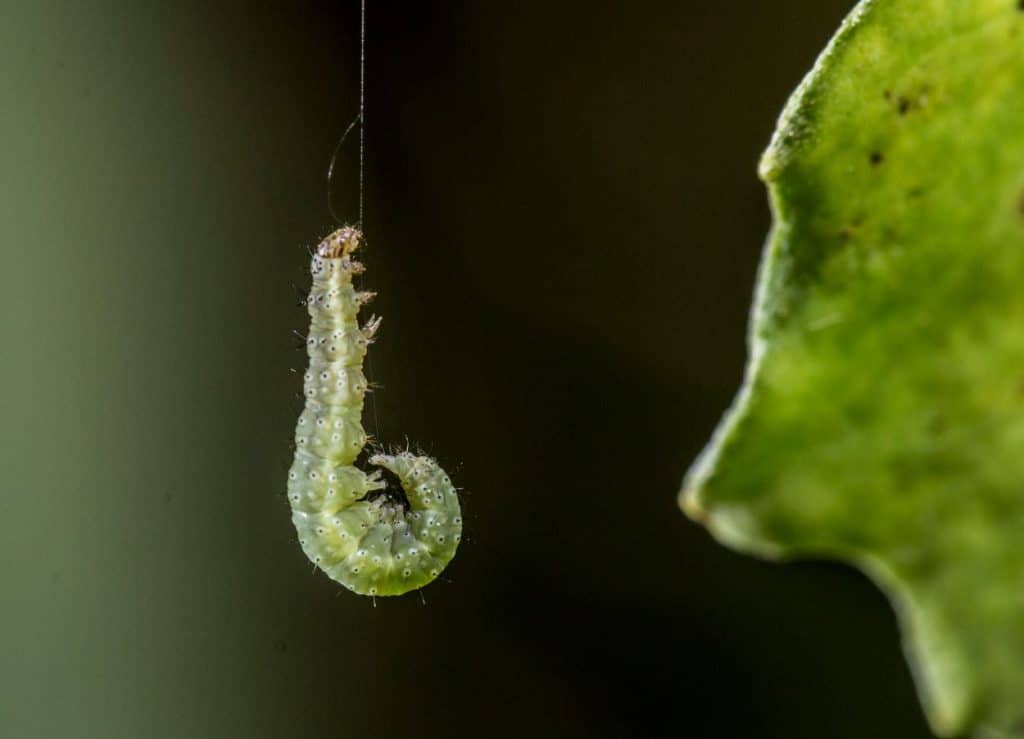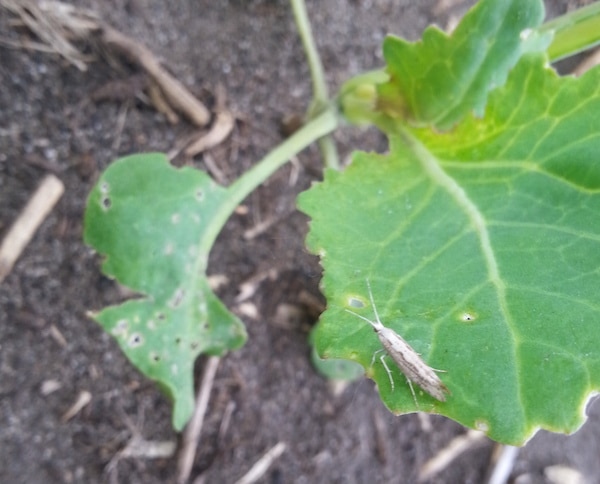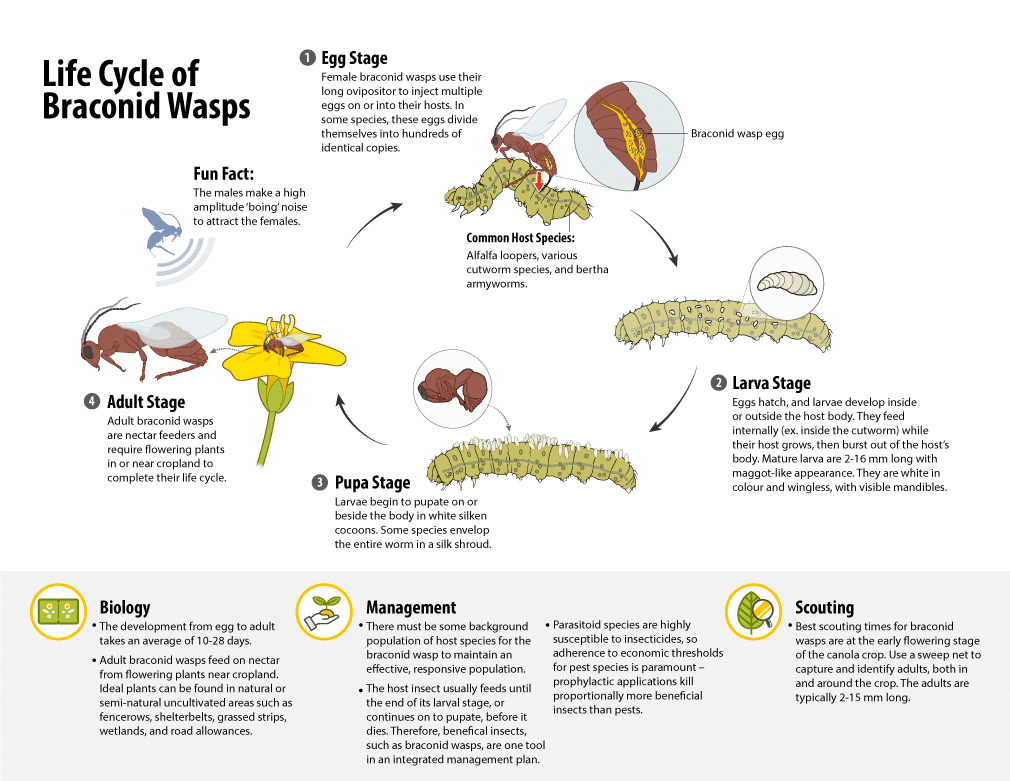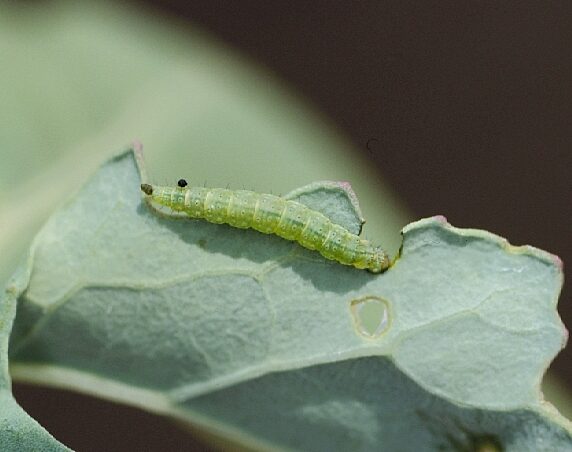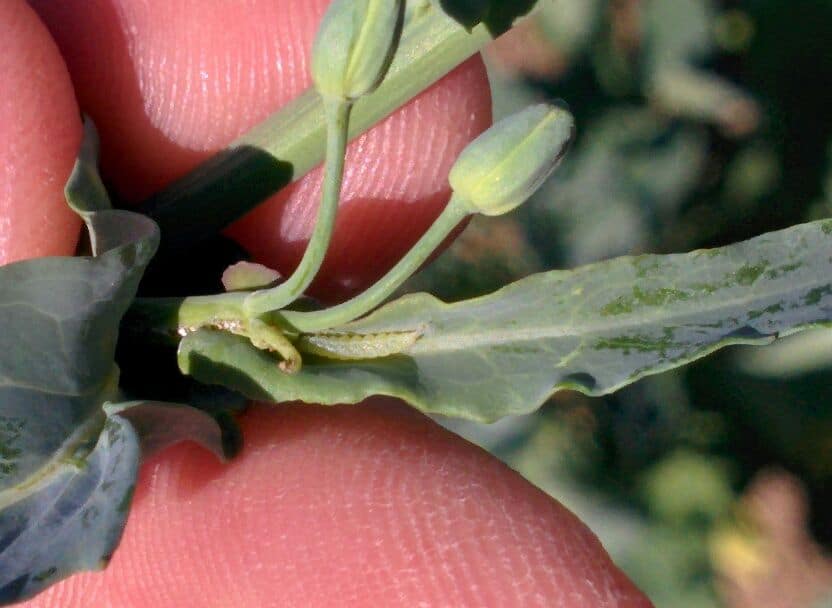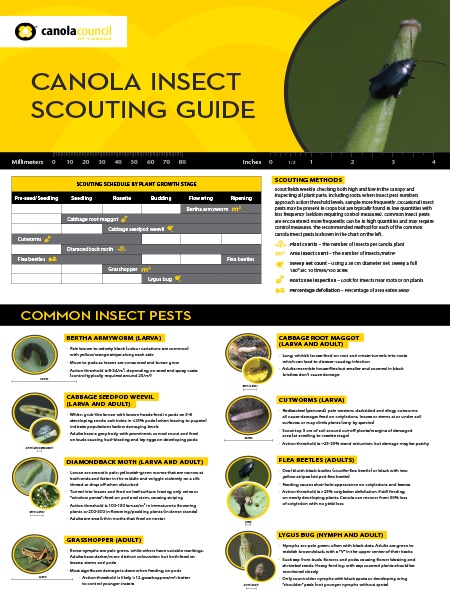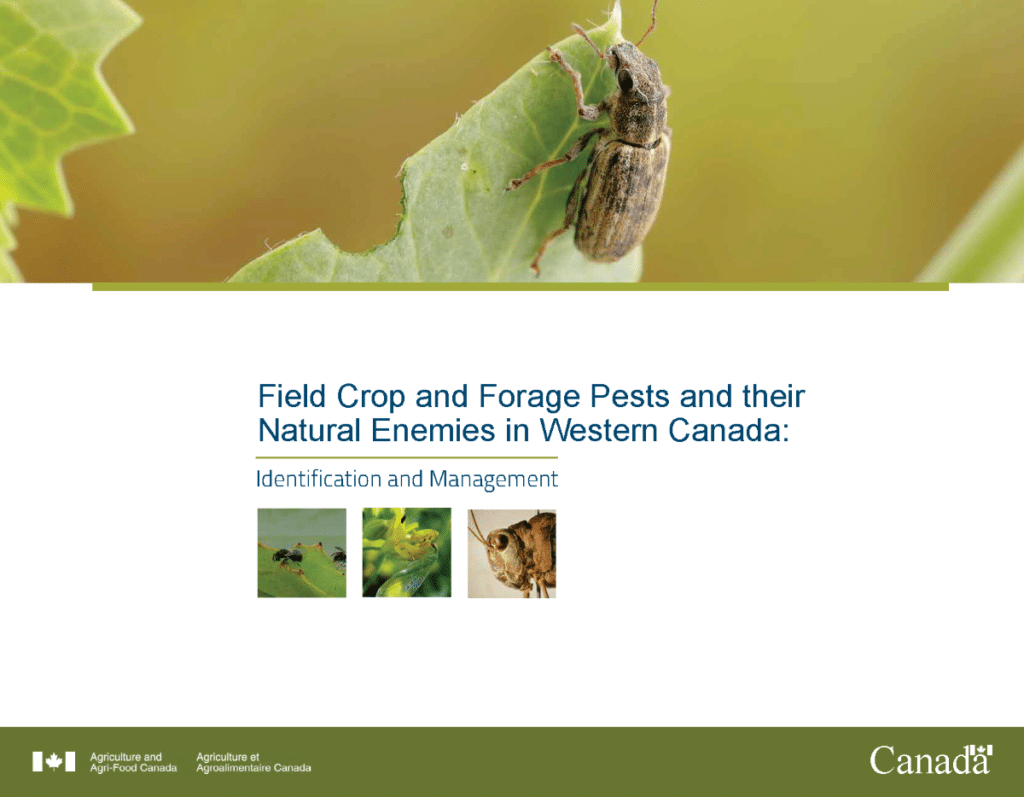In the quest to maximize canola yields, insect scouting is a vital component. Diamondback moth (DBM) impacts can vary in severity between years and regions, but outbreak years can cause significant impacts to canola fields. The reproductive potential, multi-generational nature and capacity to develop resistance to chemical management options of this insect complicate its management. So ensuring accurate thresholds is critical to management. Investigating existing DBM knowledge gaps (such as feeding behaviours) which could also uncover additional management strategies that would support long-term success of managing this insect.
Current diamondback moth (DBM) monitoring efforts
The Prairie Insect Pest Monitoring Network (PPMN) report wind trajectory maps which help predict the timing of the DBM arrival to the Prairies. They also use field surveys and pheromone catch traps to help indicate peak moth influx and provide information on when to monitor DBM larval populations.
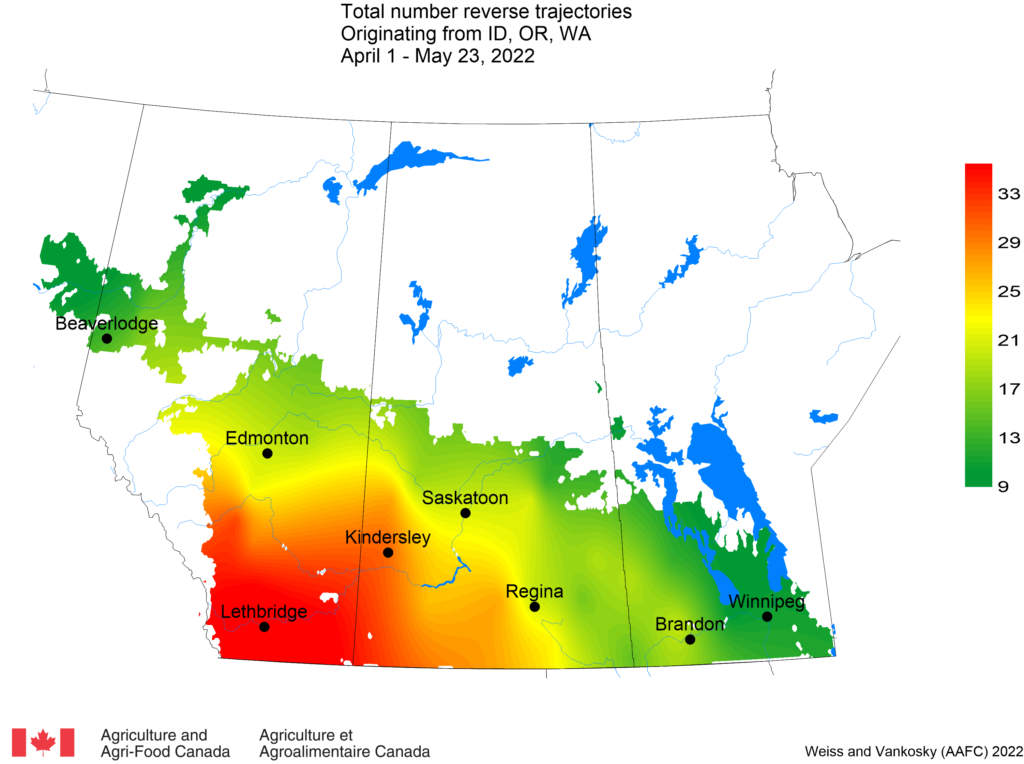
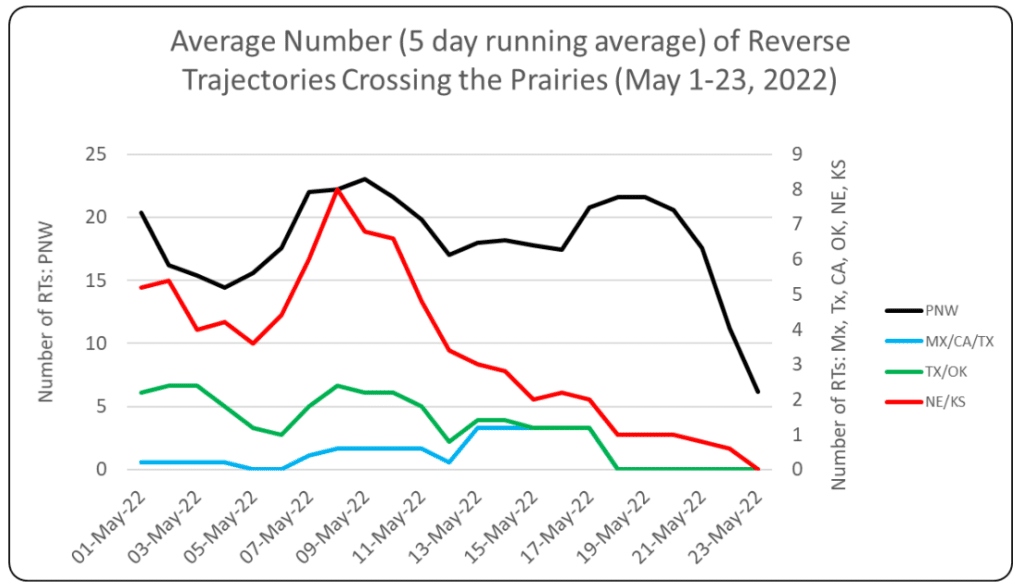
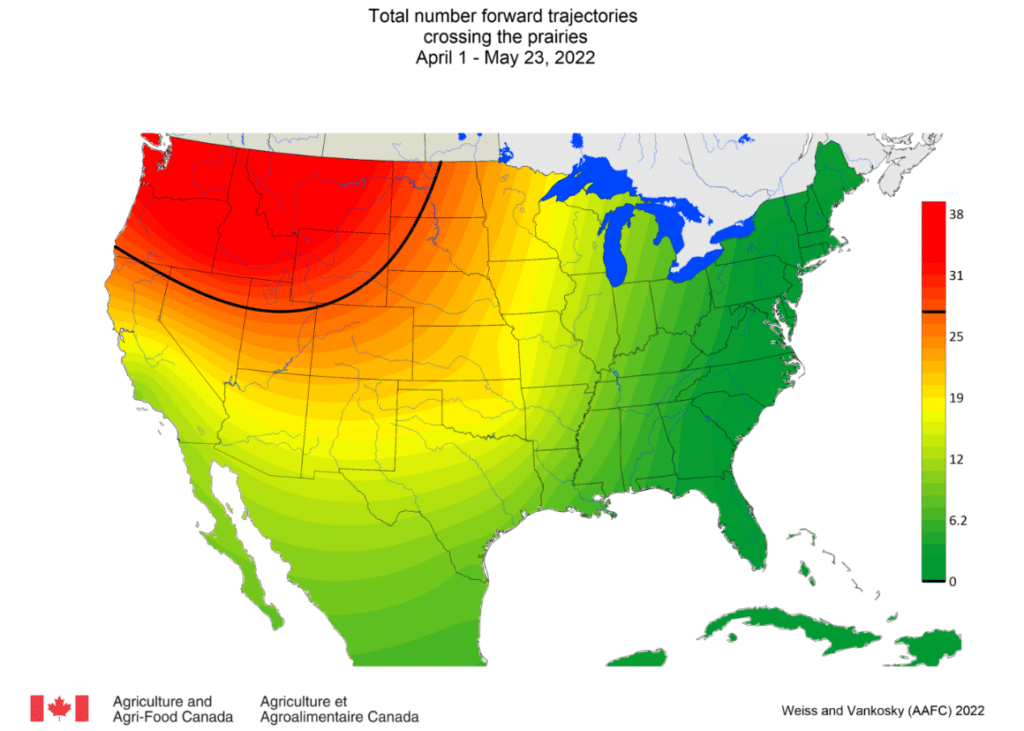
The role of natural enemies in DBM suppression in canola
The ‘Identification and assessment of the role of natural enemies in pest suppression in canola with specific reference to diamondback moth (DBM) management‘, led by Dr. Maya Evenden investigated how natural enemies can be fitted into dynamic DBM thresholds. A multipronged approach was used to estimate effects of larval densities on canola yield while also quantifying the contributions of natural enemies in the biological control.
To accomplish this, the research team surveyed natural enemies (including predators and parasitoids) associated with DBM in canola in Alberta. They also examined the impact of crop growth, background vegetation and abiotic factors (temperature, precipitation, relative humidity) on DBM.
Specific project objectives:
- Identify and monitor natural enemy populations associated with diamondback moth (DBM) in canola, with a focus on larval parasitoids.
- Determine and understand relationships between DBM and its natural enemies to develop dynamic action thresholds.
- Study non-consumptive effects of predators and parasitoids on DBM.
- Understand and quantify the effects of varying larval densities of DBM on foliar damage and yield in canola.
Diamondback moth populations
Throughout the 3-year study, DBM activity was very low in Alberta. The extreme weather conditions, including severe drought in 2018 and heavy rainfall in 2019 and 2020, may have affected the DBM influx and colonization, surveys were conducted across southern Alberta in commercial canola fields.
Evenden’s research team noted that canola yield reductions can be substantial in DBM outbreak years and may indicate high DBM larval densities per plant. Nominal thresholds tend to be conservative in most cases and are not necessarily based on pest density variations.
Natural enemy population impacts
Monitoring natural enemy populations associated with DBM in canola provided useful insights.
- Higher parasitism of DBM by a new parasitoid species Diaoclogaster claritibia (Hymenoptera: Braconidae) was recorded in the 2018 survey commercial canola fields by Dr. Cárcamo and his team.
- Diadegma insulare (Cression) (Hymenoptera: Ichneumonidae), the major larval parasitoid species of DBM in western Canada, remained the most common parasitoid species found. It contributed to 85% and 90% of the DBM parasitism in 2018 and 2019, respectively.
Diamondback moth predators and parasitoids
The beneficial insects who either predate or parasitize DBM in this study included:
- Chrysoperla carnea (Neuroptera: Chrysopidae), a common green lacewing
- Nabis spp. (Hemiptera: Nabidae), a damsel bug
- Diadegma insulare (Hymenoptera: Ichneumonidae), a parasitic wasp
- Diadromus subtilicornis (Hymenoptera: Ichneumonidae), a parasitic wasp
- Microplitis plutellae (Muesbeck) (Hymenoptera: Braconidae), a generalist parasitic wasp (typical life cycle of a braconid wasp pictured right)
- Generalist predators:
- Pterostichus melanarius (Carabidae), a carabid beetle
- Coccinella septumpunctata (Coleoptera: Coccinellidae), a seven-spot ladybird beetle (LBB), which is commonly called a “ladybug”
Developing dynamic action thresholds which consider DBM and its natural enemies
Evenden’s study is the first of its kind to provide quantitative estimates of individual consumption (feeding) patterns of several predatory and parasitic species of DBM in canola, using mechanistic consumption models. Findings related to this work included:
- The DBM life stage (ex. egg, larva or adult) impacted the functional responses (such as of rates of predation and parasitism) of predatory and parasitic species.
- When feeding on DBM eggs, all predators (including larval and adult C. septumpunctata, C. carnea, P. melanarius and Nabis spp.) showed high initial feeding rate with increasing prey density followed by a plateau (a Type II functional response).
- When feeding on DBM larvae, C. carnea and P. melanarius showed a Type III response (steady consumption at low densities, with a linear increase at medium larval densities followed by a plateau at the highest densities) while Nabis spp. showed a Type II response.
- Temperature also influenced prey consumption patterns of C. septumpunctata, where the feeding rates responses to temperature differed by life stages.
- Adults showed a Type II response to DBM larvae at low temperature (10oC) but exhibited a Type III response at high temperature (32oC).
- Both the attack rate and handling time differed with predator species.
- The DBM larvae and eggs in this study were consumed by P. melanarius.
- Other predators, including larvae and adults of C. septumpunctata also ate many DBM.
Predator and parasitoid consumptive effects on DBM larvae
Conserving beneficial insects in canola fields can help manage DBM populations, especially in high infestation years
- The DBM populations could be substantially reduced from the combination of predators and parasitoids feeding on DBM eggs and larvae (in addition to pathogens, which can also help reduce DBM populations).
- Crucifer vegetable crops can consider augmentation of predators like C. septumpunctata or C. carnea to help with DBM management.
- The is value to having natural enemy biodiversity in crop ecosystems.
Generalist parasitoid has an instar preference
- Microplitis mediator (which takes 12-14 days to develop from eggs to pupae, with the feeding larval stage taking up ~9-10 of those days) can parasitize all DBM larval stages, however it prefers the second and third larval instars.
- This parasitoid species can contribute to collective biological control services provided by predators, parasitoids and pathogens of DBM in canola.
- Further investigation should focus on its seasonal phenology, peak parasitism, and distribution dynamics in relation to DBM larval populations.
Temperature affected ladybird beetle (LBB) response to DBM larvae
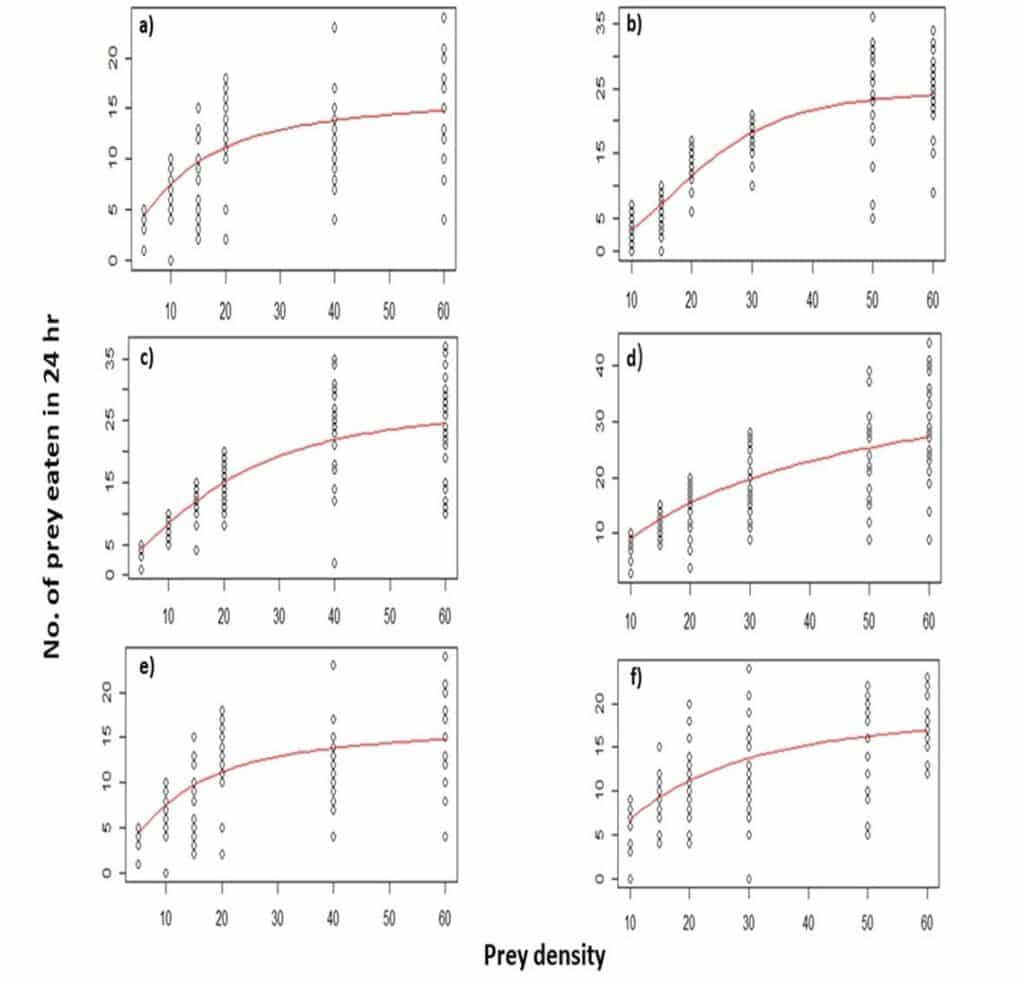
- Temperature affected the LBB larvae attack rate and handling time of DBM larvae.
- At 10°C the LBB larval attack rate was almost four times lower than 32°C, while the handling time was the longest at 10°C.
- Attack rate and handling time wasn’t statistically different between 22°C and 32°C when LBB larvae preyed upon DBM larvae. However, the handling time of LBB larvae at both 22 and 32°C was half the time of that at 10°C.
- Lower DBM larvae handling time at higher temperatures resulted in maximum DBM consumption by LBB adults.
- At 32°C, the maximum feeding rate of LBB adults was ~33 DBM larvae per day and ~20 DBM larvae per day for LBB larvae.
- The functional response of LBB adults on DBM larval prey items showed similar trends at the different temperatures tested.
- The attack rate of LBB adults was slowest and the handling time was the longest at the lowest temperature (10°C).
- Attack rates increased with temperature, but both attack rates and handling time did not differ significantly between 22°C and 32°C.
Functional response of parasitoids of DBM
In this study, the general shape of functional response did not change with the exposure period. Attack rate did not differ significantly, however handling time differed significantly to each other. More specifically:
- Diadegma insulare that were exposed for longer (3 days) needed less time to handle the DBM larvae and showed Type II response for both 1-day and 3-day exposure periods.
- Diadromus subtilicornis that were exposed for longer (3 days) needed less time to handle the DBM pupae and showed Type II response for both 1-day and 3-day exposure periods.
- Microplitis mediator (a generalist parasitoid) parasitized all DBM larval instars, but it seemed to prefer the second and third DBM larval instars.
- This preference could be related to impact on developmental time, as the wasp pupae that resulted from eggs laid into fourth instar DBM took more time to develop.
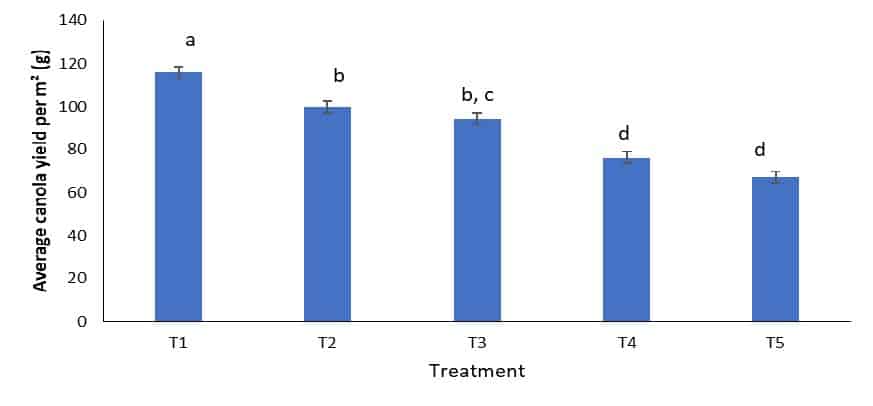
Non-consumptive effects on DBM
This research study provides the first-ever report of non-consumptive effects of the C. septumpunctata predator’s presence on DBM and its interaction with plant host (canola) quality, based on the level of fertilizer that was provided to the plant. Different life stages of the predator (larvae or adults) were used to test DBM larval survival, growth and leaf consumption.
Impacts on DBM oviposition choice
- The physical presence of LBB adults or its interaction with fertilization regime had no effect on DBM oviposition choice.
- Host plant nutrition had a significant impact on oviposition choice.
- DBM females laid ~2x more eggs on the high fertility plants compared to the low fertility plants (which underlines the effects of host plant nutrient availability on DBM preference for colonization).
Impacts on DBM leaf consumption and weight gain
- Physical presence of either LBB adults or larvae reduced DBM larval weight gain by up to 2% (likely due to reduced feeding).
- Perception of fear due to adult LBB presence reduced overall leaf consumption by 24%.
- Physical presence of LBB larvae, reduced larval DBM weight by 19% compared to the control, which resulted in a 35% reduction in leaf area consumed.
Overall non-consumptive results
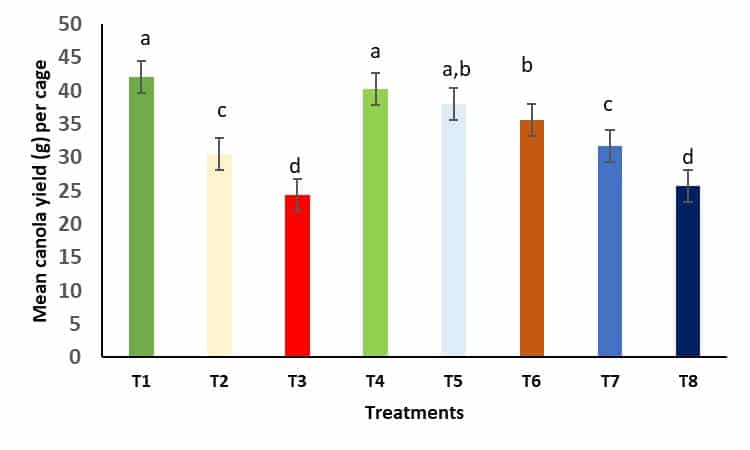
T1= caged control, T2= 2 larvae per plant at early flowering stage, T3= 4 larvae per plant at early flowering stage, T4= 2 larvae per plant at early flowering stage, larval feeding discontinued, and larvae removed once they neared pupation, T5= 4 larvae per plant at early flowering stage, larval feeding discontinued, and larvae removed once they neared pupation, T5= 2 larvae per plant at late flowering/early pod stage, T6= 2 larvae per plant at late flowering/early pod plant,T7=4 larvae per plant at late flowering/early pod plant, T8= 8 larvae per plant at late flowering/early pod plant. Read more in the final report.
- Plant nutritional status alone may be a significant contributor to adult females’ choice for oviposition compared to perception of fear due to predator presence.
- That non-consumptive effects add to consumptive effects and together can negatively affect DBM larvae fitness in ways other than just direct predation.
- Future studies on DBM natural enemy guilds should focus on collective influence of consumptive and non-consumptive effects on DBM fitness gains and interaction dynamics.
Effects of varying larval densities of DBM on foliar damage in canola and yield
- The results of the field cage study and the controlled growth chamber study confirm that both foliar damage and yield reduction linearly increase with DBM larval density.
- High larval density at the podding stage is more detrimental to canola yield than at the flowering stage.
- While significant yield reductions occur when larval densities exceed four DBM larvae/plant, the highest yield reductions occurred at eight DBM larvae/plant, at canola podding stage.
- Yield was reduced ~2 times in plants with eight larvae/plant, and had ~4 times more defoliation compared to controls (that had no larvae).
- Yield loss was ~1.5 times greater in plants with 4-8 larvae/plant than the control. Yield loss was 1.25 times greater than the current nominal threshold (of two larvae/plant).
- Yield loss was not statistically different in plants with ~2 larvae/plant at the podding stage, compared to the control.
- Under field conditions, plants with eight larvae/plants had ~4x greater foliar damage and greater yield reductions than those with 2 larvae/plant (the current nominal threshold) at podding stage, in both 2019 and 2020.
- Plants with two larvae/plant (the current nominal threshold) yielded 1.5% more than plants with eight larvae/plant.
- There were no yield differences between plants with two larvae/plant and the no-larvae control yield.
- Growth room studies support these findings, as larval density of 2-4 larvae/plant at flowering-podding stage had more pods than plants infested with eight larvae/plant, resulting in significant yield reduction.
Canola grower recommendations for DBM management
- This study indicates that yield reductions at current nominal thresholds (of 1-2 DBM larvae/plant in canola) may not be as significant in years with low to moderate DBM infestation. Therefore, the nominal thresholds for DBM in canola may need to be adjusted.
- DBM management should focus on pest monitoring and forecasts, estimates of pest density, commodity value, and the consideration to the role of natural enemies in the cropping systems in addition to insecticide utilization.
- Dynamic action thresholds incorporate the effect of natural enemies on pest control to provide realistic estimates of pest population densities to trigger management activities.
Related DBM research
- Effect of hairiness in Brassica lines on the abundance, feeding and oviposition behavior of flea beetles, diamondback moth and aster leafhopper
- Coordinated surveillance, forecasting and risk warning systems for field crop insect pests of the Prairie ecosystem
- Determining arthropod biodiversity in canola cropping systems as a key to improved sustainability of production
- Improved integrated crop management with beneficial insects (part 1)
- Improved integrated crop management with beneficial insects (part 2)
- Development of reduced-risk strategies through coordinated monitoring, forecasting and risk warning systems for insect pests of field crops
- Co-ordinated monitoring, forecasting and risk warning for insect pests of field crops in Canada
- Identifying key predators and their role in canola insect pest suppression
- Detection, surveillance and management of weed, insect and disease pests that threaten the economic viability of crop production and the environmental health of Prairie agro-ecosystems
Canola DBM scouting resources


Published May 31, 2022

